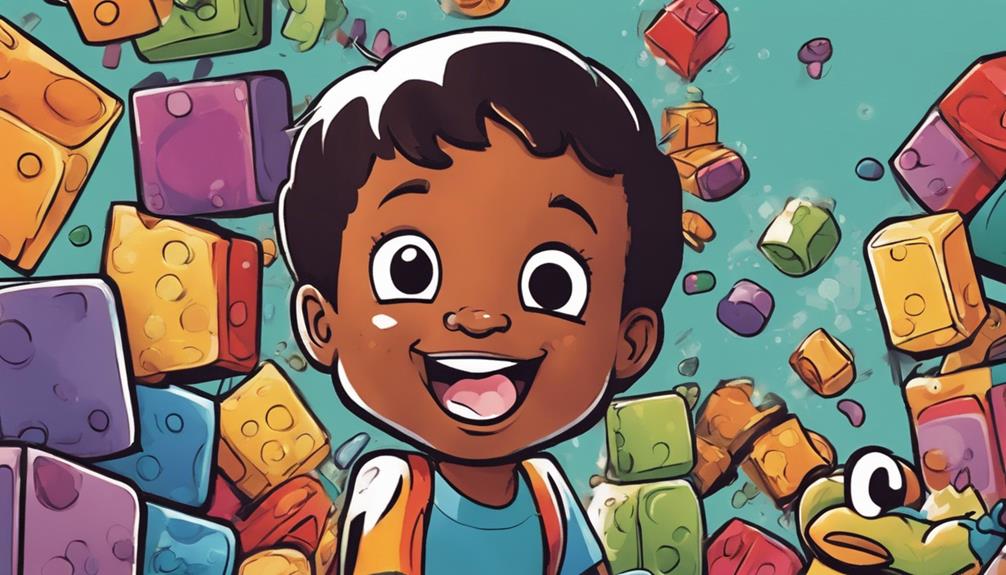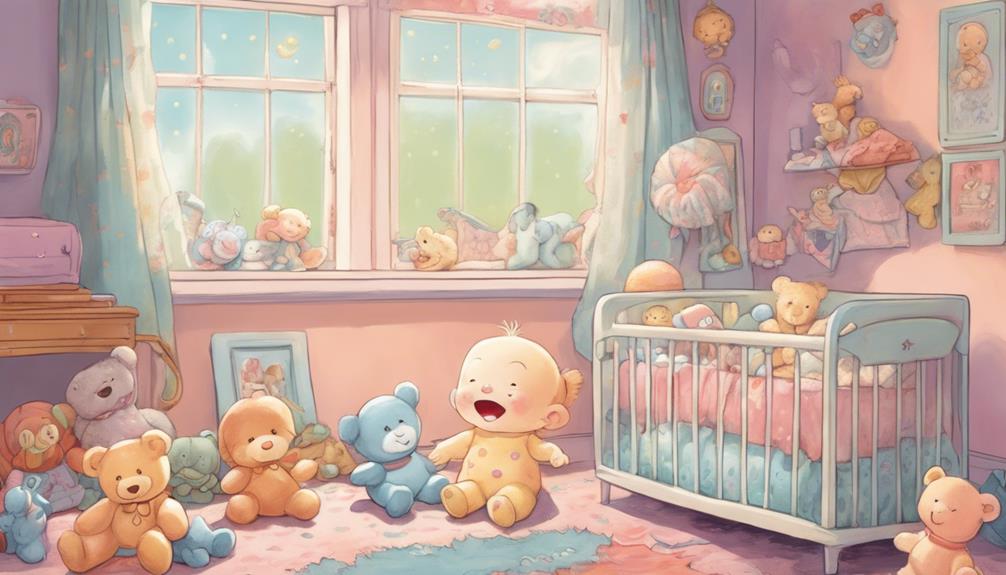To help young children understand gratitude, use simple stories about kindness and giving, and ask how they’d feel if someone helped them. Encourage them to share times when someone was kind to them and talk about how that made everyone feel good. Show them that saying thanks, through words or actions, makes relationships stronger. Keep exploring more ways to teach gratitude, so your child learns how thankfulness creates happy, caring environments.
Key Takeaways
- Use real-life stories of kindness and giving to make gratitude relatable and concrete for children.
- Encourage children to imagine how they would feel in others’ situations to foster empathy.
- Invite children to share personal experiences of kindness to deepen their understanding of gratitude.
- Highlight how expressing thanks creates a warm environment and strengthens relationships.
- Use simple examples and reflection to help children recognize and practice genuine appreciation naturally.

Have you ever wondered how to teach children the true meaning of gratitude? It’s a question many parents and caregivers ask, especially when trying to nurture kindness and appreciation in young minds. One effective way to do this is by sharing examples that resonate with their everyday experiences. You might tell stories about someone who helped a friend or received a thoughtful gift, highlighting how those actions made everyone feel good. Sharing these examples helps children see gratitude in action, making it more concrete and relatable for them. When you talk about real-life situations, children can better understand how expressing thanks isn’t just about words — it’s about recognizing and appreciating the kindness and effort others put into their lives.
Encouraging reflection is another essential step. After sharing examples, ask your children how they would feel if they were in the other person’s shoes or how they might show gratitude in similar situations. Questions like “How would you feel if someone did that for you?” or “What could you say or do to thank someone?” prompt kids to think about their feelings and the importance of appreciation. Reflection helps children internalize the value of gratitude rather than just repeating a phrase out of habit. It encourages them to see gratitude as a genuine feeling that naturally arises when they recognize the kindness around them.
You can make these lessons more engaging by involving children in discussions about their own experiences. Ask them to recall a time when someone was kind to them—perhaps a friend, family member, or teacher—and guide them to articulate what that kindness meant. This sharing of personal stories reinforces their understanding and helps them see gratitude as a meaningful part of their relationships. Additionally, understanding the importance of color accuracy in home settings can help children appreciate how details matter in creating a warm, inviting environment, just as expressing gratitude creates a positive atmosphere in relationships. When children realize that expressing thanks can strengthen bonds and make others feel valued, they’re more likely to adopt grateful habits.
Frequently Asked Questions
How Can I Teach Gratitude During Stressful Times?
During stressful times, you can teach gratitude by encouraging mindful journaling, where children reflect on positive moments despite challenges. Incorporate gratitude role play to help them practice recognizing kindness and good things around them. You might also ask them to share what they’re thankful for each day. These activities make gratitude tangible, helping them manage stress by focusing on the good, fostering resilience and a positive outlook even in tough moments.
What Are Simple Activities to Practice Gratitude Daily?
You can practice gratitude daily by starting gratitude journaling each morning or evening, jotting down things you’re thankful for. Additionally, write daily thank you notes to people who matter, whether they’re family, friends, or colleagues. These simple activities help you focus on positive aspects of your life, making gratitude a natural habit. Consistent practice boosts your mood and fosters appreciation, even during stressful times.
How Do I Handle Ungrateful Responses From Children?
When children respond ungratefully, you should model patience and avoid reacting with frustration. Gently remind them of the importance of gratitude, using positive reinforcement when they show appreciation. Praise their effort to be thankful, and explain why gratitude matters in a calm, understanding tone. Consistently demonstrating patience and rewarding positive behavior encourages them to develop a grateful attitude over time.
Is Gratitude Development Different for Boys and Girls?
Is gratitude development different for boys and girls? Think of emotional awareness as a delicate plant that needs nurturing. Research shows gender differences can influence how children express gratitude, with girls often showing more emotional awareness and openness, while boys might need more encouragement to recognize their feelings. You can bridge this gap by fostering empathy and understanding, helping both boys and girls grow into grateful, emotionally-aware individuals.
Can Gratitude Improve a Child’s Social Skills?
Yes, gratitude can improve your child’s social skills by fostering sharing and empathy. When children feel grateful, they’re more likely to share with others and understand their friends’ feelings. This enhances their ability to connect and communicate effectively. As you encourage gratitude, your child learns to appreciate others’ kindness, which builds stronger friendships and nurtures a caring attitude. Ultimately, gratitude helps children become more empathetic and socially confident.
Conclusion
Now that you understand how to explain gratitude, remember it’s like planting a tiny seed that grows into a big, beautiful tree. When you help children see the good in what they have, you give them a gift that lasts forever. Keep showing them how to say thank you and appreciate others, and you’ll see their grateful hearts blossom. Just like a garden needs care, gratitude needs your kindness to flourish.









